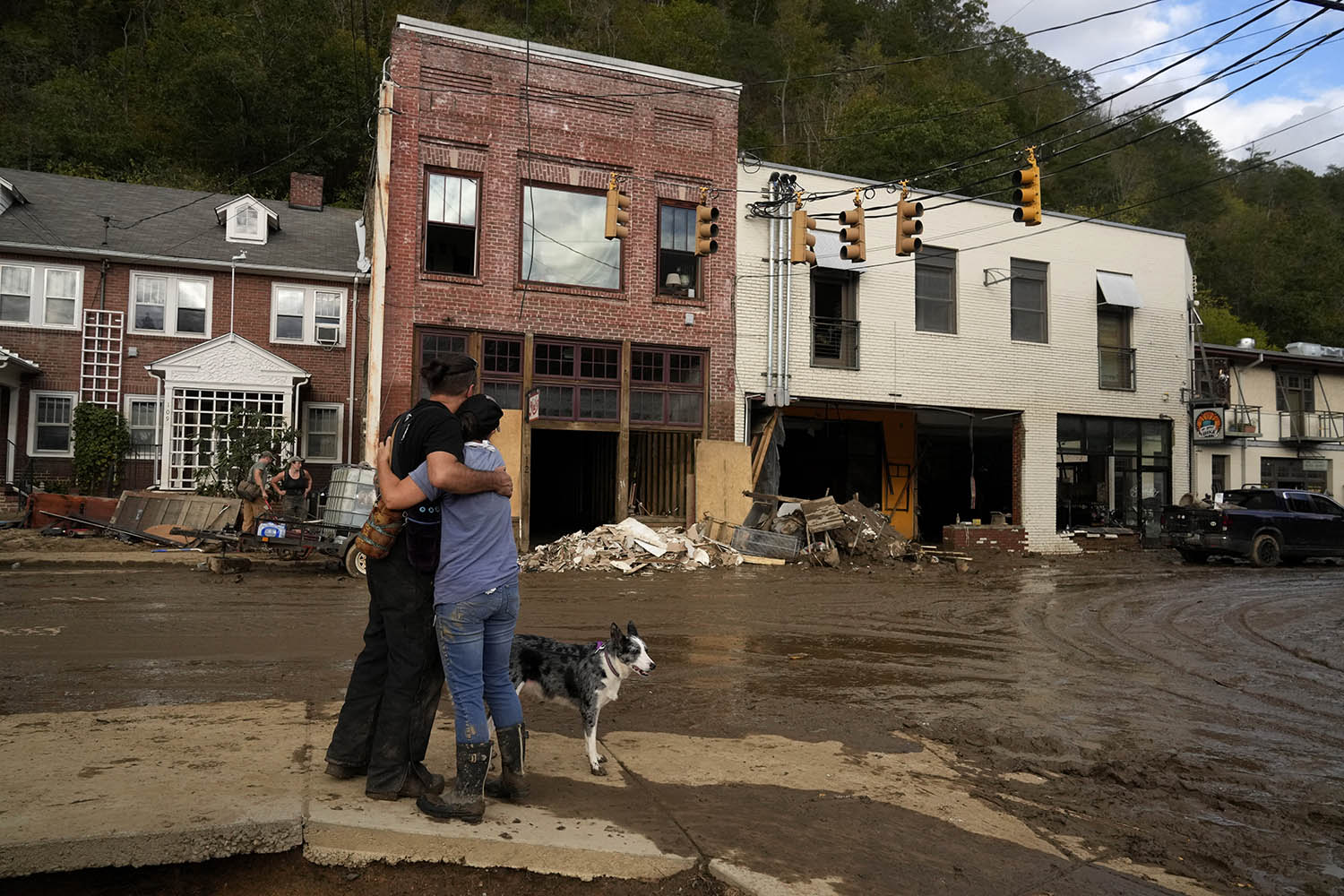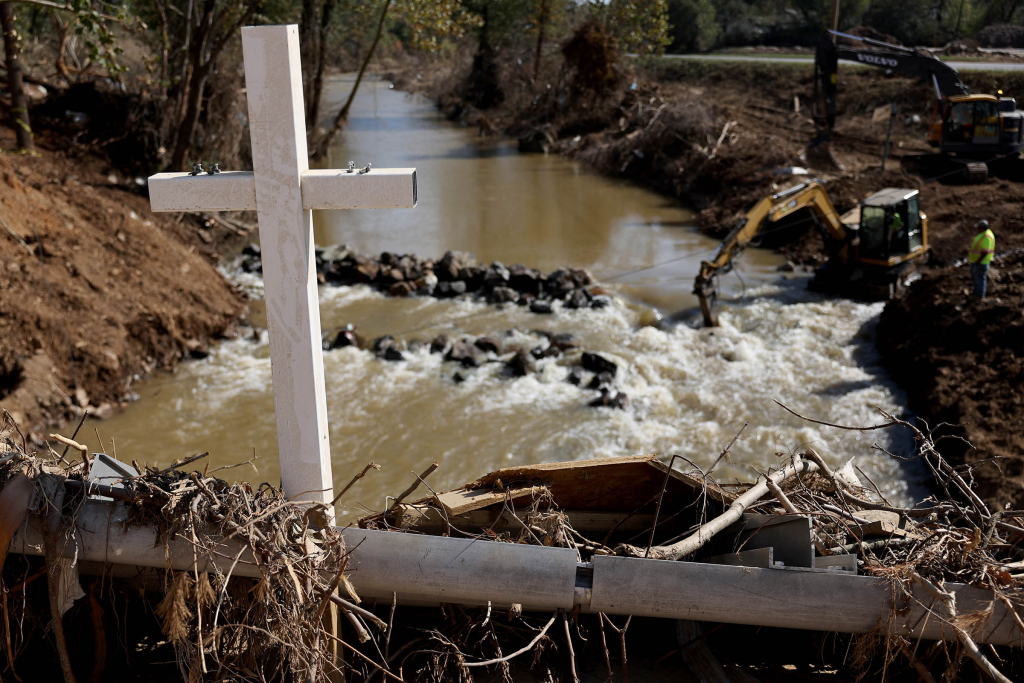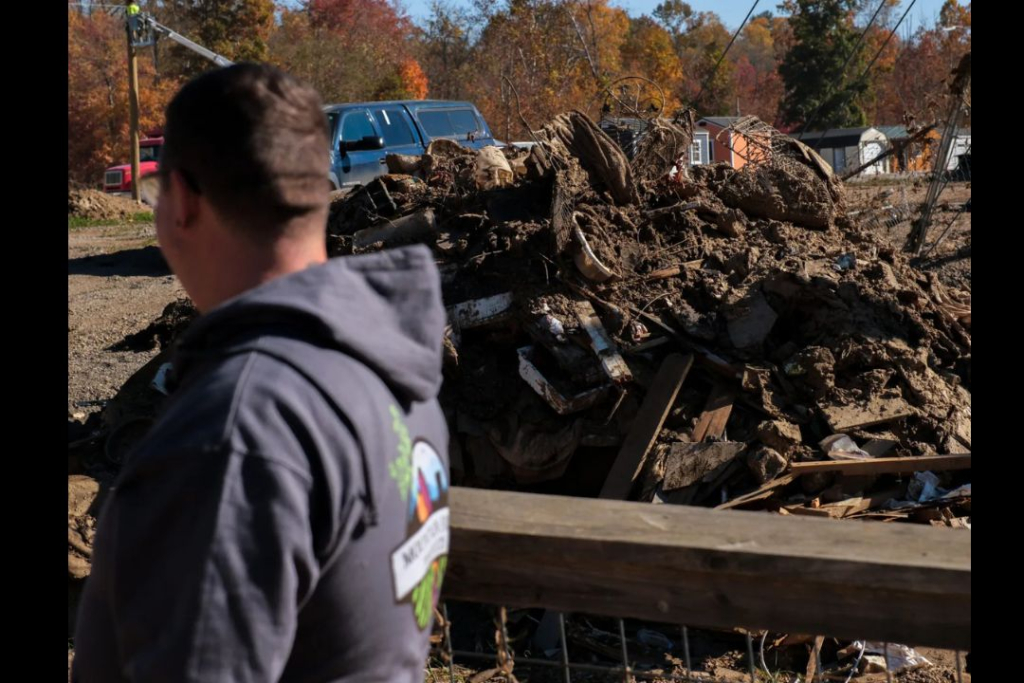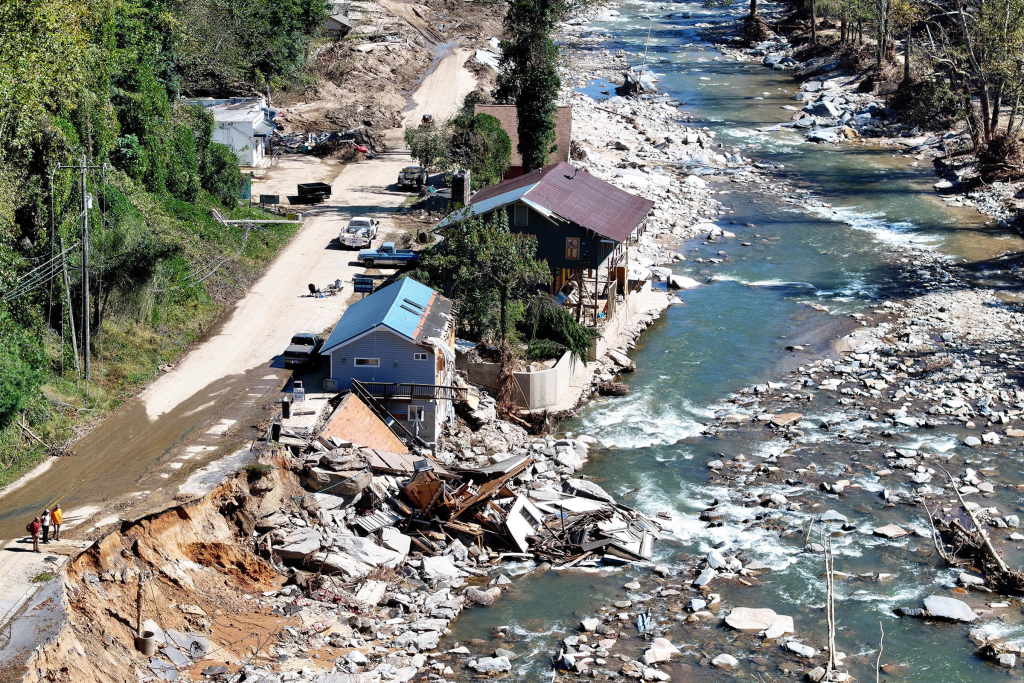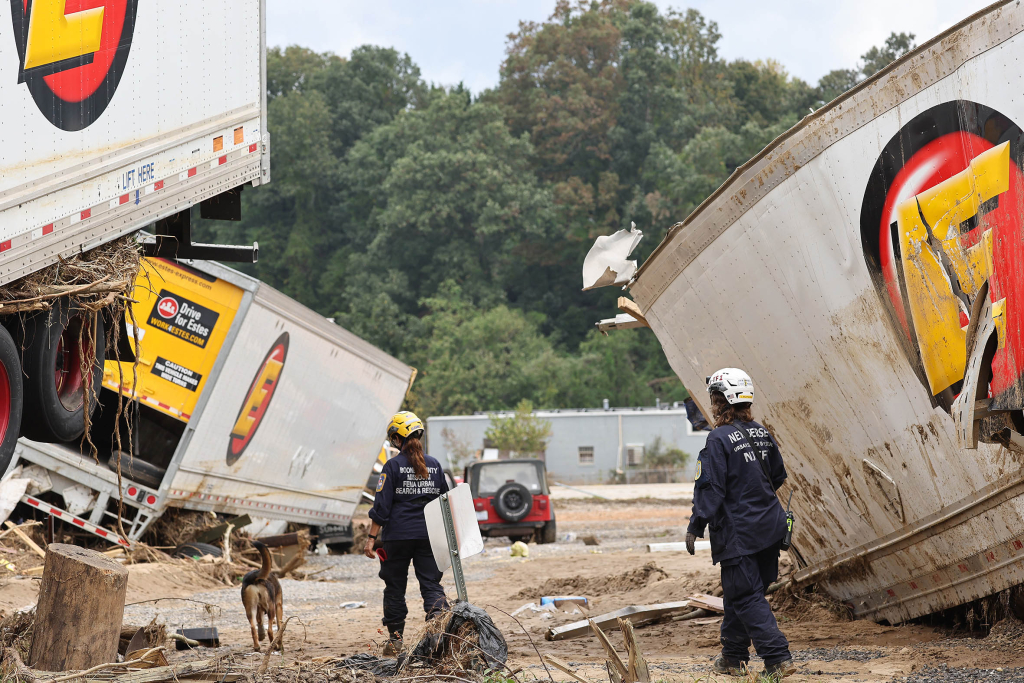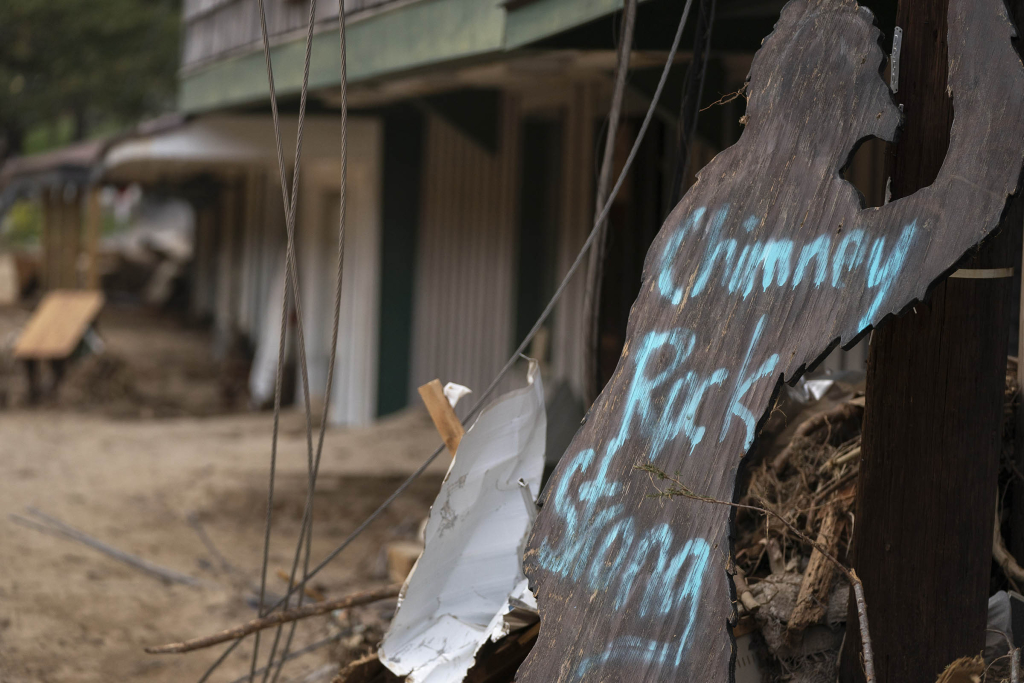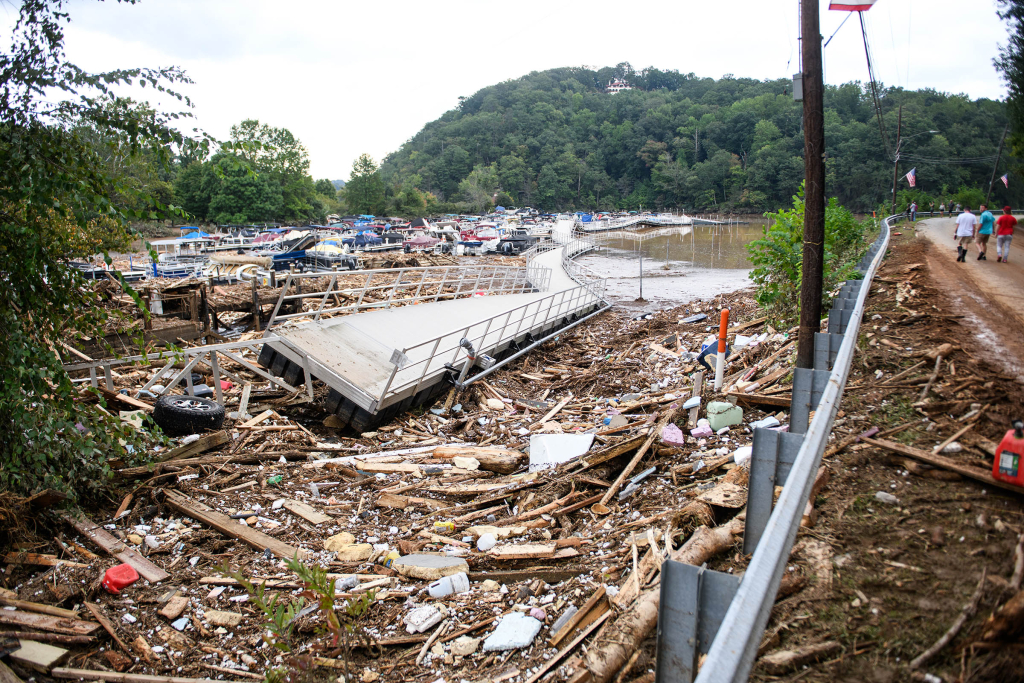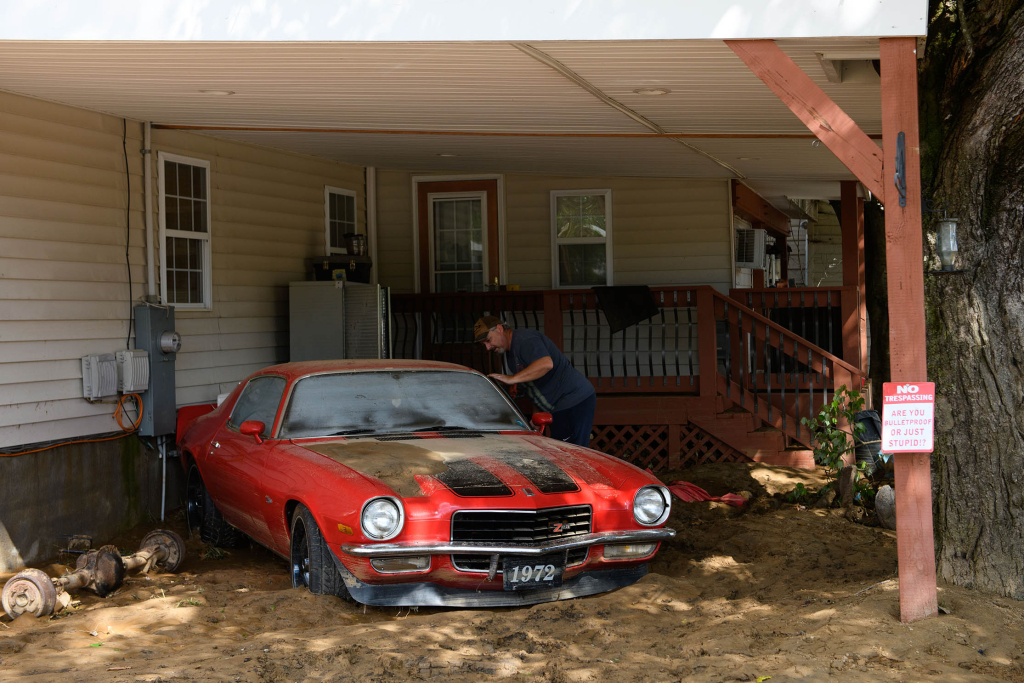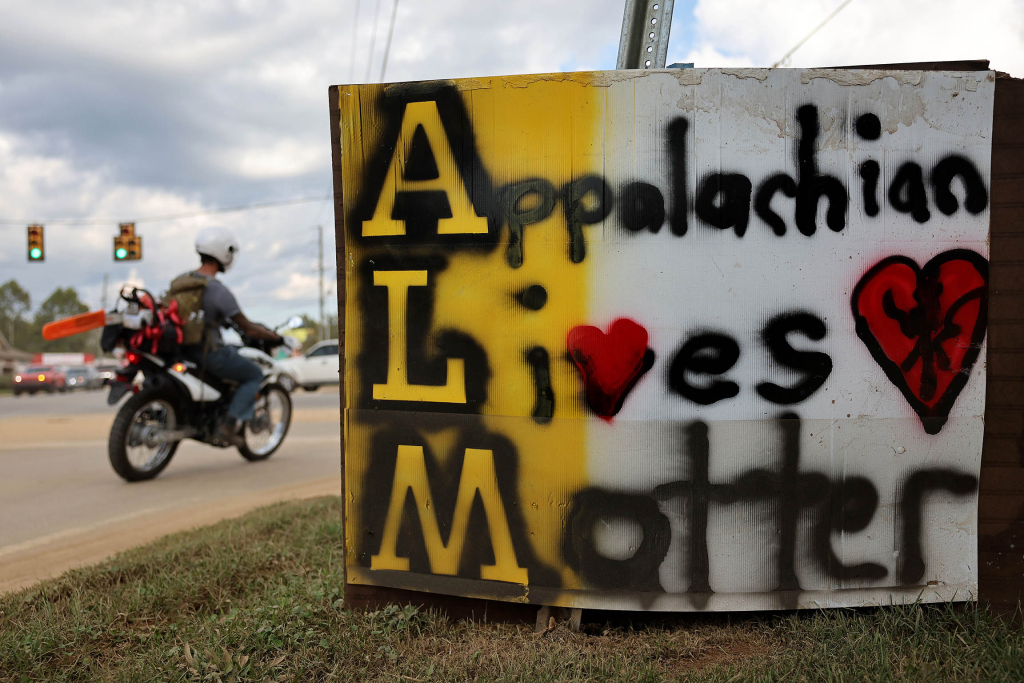SPRUCE PINE, N.C. (NCN News) — It has been one year since the worst storm to ever hit North Carolina devastated the western part of the state.
Hurricane Helene was not even on the list of storms to worry about at first. It made landfall in Florida’s Big Bend region on Sept. 27 as a Category 2 hurricane before beginning a long trek inland. By the time it reached the Appalachian Mountains, it was a tropical storm still packing high winds and heavy rain.
Western North Carolina had already seen significant rainfall before Helene arrived, setting the stage for catastrophic flooding. Meteorologists predicted once-in-a-thousand-year flooding, and they were right. Some weather stations from Mount Mitchell to Asheville recorded more than 30 inches of rain, in addition to days of rainfall leading up to the storm.
On Sept. 25, forecasters placed the region under tropical storm warnings. Gov. Roy Cooper declared a state of emergency. Mount Mitchell State Park and others closed, and the Blue Ridge Parkway shut down. Hundreds of roads were impassable, and more than 2,000 landslides were reported in North Carolina.
In a rare, coordinated release, the National Hurricane Center and NOAA warned of the inland flood threat and asked media outlets to emphasize the risk. Helene’s impact was every bit as intense as predicted.
The South Toe Township of Yancey County received 31 inches of rain. Mount Mitchell recorded wind gusts over 100 mph in a part of the state that rarely sees such conditions. Sixty-three stream and river gauges logged record water levels. The South Toe River in Yancey County and the Ivy River in Buncombe County each broke their previous flood records by nearly nine feet.
In Mitchell County, the smallest county in the state, the normally calm Toe River rose 35 feet, overflowing its banks and flooding homes and businesses in small towns like Spruce Pine. Luther Stroup, who owns Stroup Hobby Shop, recalled watching the river rise to within inches of his shop and home. He said the community went without power, sewer, phones or water for 22 days.
Areas in the Black Mountains were especially devastated. Black Mountain police reported neighborhoods in Montreat and Swannanoa “destroyed including homes on fire, along with numerous fatalities.” The village of Chimney Rock was also largely swept away in the floodwaters.
Across the region, more than 400 roads closed and more than 200 rescues were carried out. In total, 108 people died and hundreds more were injured in North Carolina.
A year later: Recovery
Recovery has been uneven. Ninety-six percent of small business owners across western North Carolina reported Helene hurt them, hitting during peak tourist season and leading to widespread event cancellations. Even mining and computer parts manufacturing in Spruce Pine were disrupted, causing global supply concerns.
Sharon Decker, senior advisor of the Governor’s Recovery Office for Western North Carolina, said the community stepped up when it was needed most. Neighbors and churches delivered food, water and supplies to people who had lost everything. The storm also forced the region to confront its aging infrastructure and to begin planning for future disasters.
Gov. Josh Stein said six out of seven businesses have not returned to pre-Helene revenues. Still, Decker noted restaurants, tourist attractions and farms are coming back, and leaders hope tourists will return as well.
Decker praised bipartisan efforts to secure funding for repairs to businesses, homes, roads and infrastructure. Stein has pushed for additional state and federal support. But recovery is expected to be a long-term process.
Officials are also coordinating with schools, nonprofits and community groups to build volunteer and resource databases to be better prepared next time.
Decker said her hope is that the sense of community sparked by Helene’s devastation — people going above and beyond to help one another — remains even after recovery is complete.
“We’re better as a nation and state when there are disasters,” Decker said. “And as a state, we’ll be more prepared in the future for storms like Helene.”
